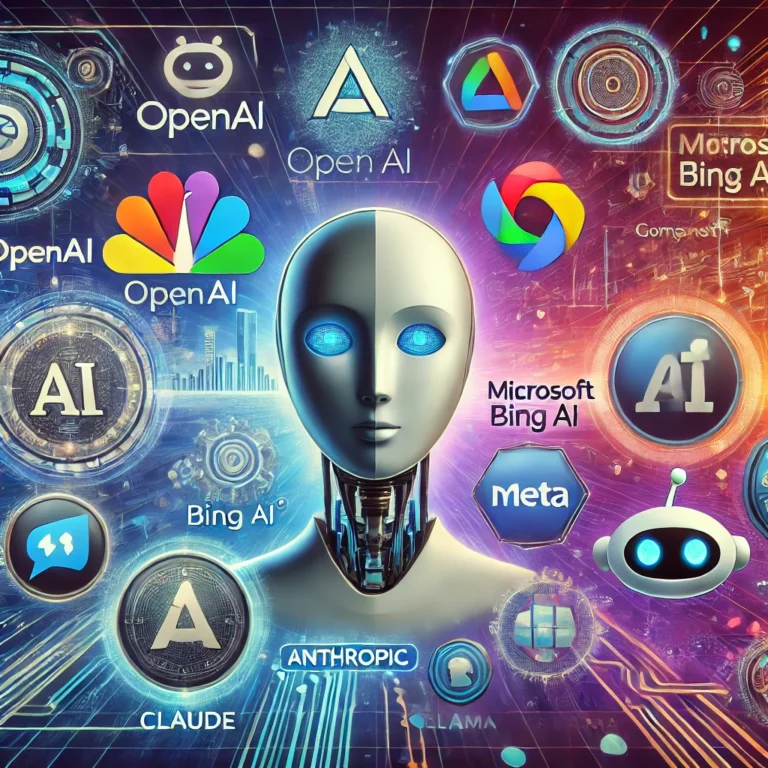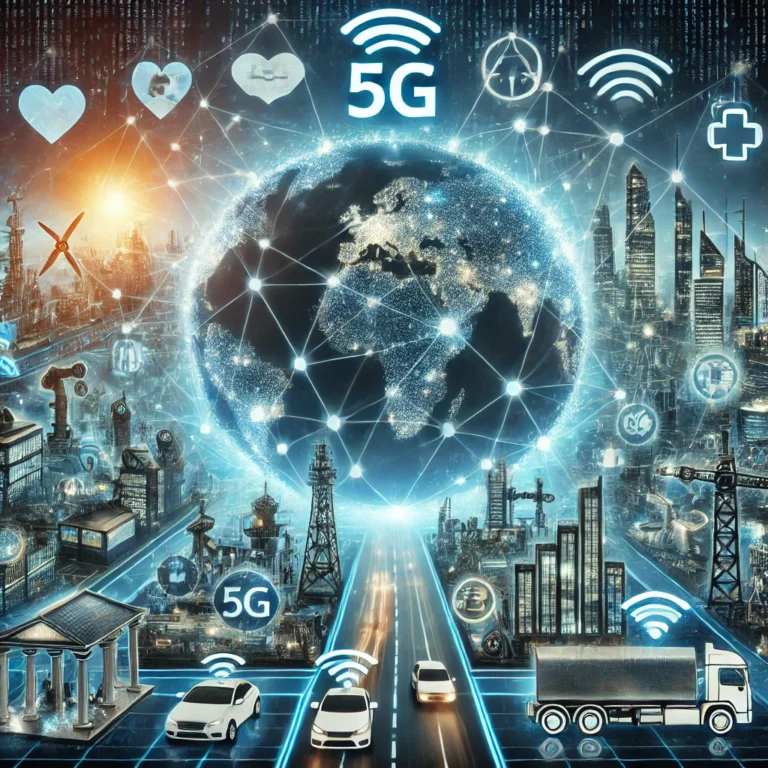Generative AI: A Deep Dive into Its Evolution, Applications, and Future
Introduction
Artificial Intelligence (AI) has been revolutionizing various sectors for decades, but in recent years, Generative AI has taken center stage. This specific branch of AI is not just capable of performing tasks but of creating new content, ranging from text, images, and music to more complex outputs like entire pieces of art, fully developed articles, and even coding scripts. But what is Generative AI exactly, how did it begin, how is it being used today, and what does its future hold?
This comprehensive guide will provide a deep understanding of Generative AI, how it started, its progression over the years, and where it’s headed in the future.
What is Generative AI?
Generative AI refers to models and systems that can generate new data that resembles a given dataset. Unlike traditional AI, which focuses on recognizing patterns, making decisions, or classifying data, Generative AI creates something new from its learned patterns.
At its core, generative AI relies heavily on deep learning models, which are inspired by the neural networks of the human brain. These models learn to understand complex structures in large datasets, allowing them to generate outputs that are indistinguishable from human-made content.
Some of the most notable generative AI models include:
- Generative Adversarial Networks (GANs)
- Variational Autoencoders (VAEs)
- Transformer-based models like GPT (Generative Pretrained Transformer)
Each of these models has contributed significantly to the evolution of generative AI, which now impacts many industries, including entertainment, medicine, art, and marketing.
The Origins of Generative AI
Generative AI is built upon the foundational concepts of machine learning (ML) and deep learning. The journey to modern-day generative models is rooted in several key advancements in the field of AI:
1. Early Machine Learning Algorithms
In the mid-20th century, early work in artificial intelligence involved creating systems capable of learning from data. The first forms of AI, often called symbolic AI or Good Old-Fashioned AI (GOFAI), were rule-based and relied heavily on structured inputs. These systems could not generate anything new; they could only process or classify data.
However, in the 1980s and 1990s, the shift to machine learning (ML) led to algorithms that could learn patterns from data. These algorithms, such as decision trees, Bayesian networks, and support vector machines (SVM), were more flexible than earlier rule-based systems. But even then, generative capabilities were limited.
2. The Rise of Neural Networks
The real leap toward generative AI began with the rise of neural networks in the 2000s, thanks to advancements in computing power and the availability of large datasets. Neural networks, especially deep neural networks, mimicked the brain’s structure, allowing models to learn more complex patterns.
In 2014, Generative Adversarial Networks (GANs) were introduced by Ian Goodfellow and his colleagues, marking a major breakthrough in the field. GANs consist of two neural networks—a generator and a discriminator—that work together in a competitive setting. The generator creates new data, and the discriminator evaluates the data, improving the generator’s output over time. GANs were a huge step forward in image generation and other creative applications.
3. Transformer Models and GPT
Another significant leap came with the development of transformer models in 2017. Originally designed for natural language processing (NLP) tasks, the transformer architecture proved revolutionary in its ability to handle sequences of data, such as text, with incredible efficiency. Models like BERT (Bidirectional Encoder Representations from Transformers) and GPT (Generative Pretrained Transformer) capitalized on this architecture.
With the release of GPT-2 and GPT-3 by OpenAI, text generation reached new heights. These models could generate coherent, contextually accurate, and human-like text, pushing the boundaries of what was thought possible in AI-generated content.
The Progression and Key Milestones of Generative AI
The progression of Generative AI has been marked by several key innovations, models, and applications. Each step has expanded its capabilities across industries.
1. Generative Adversarial Networks (GANs)
GANs have been widely used for generating highly realistic images, videos, and even animations. Some of the key areas where GANs have been applied include:
- Image Synthesis: GANs have been used to generate high-quality images that mimic real-world visuals. Platforms like ThisPersonDoesNotExist.com demonstrate how GANs can create photorealistic images of human faces that do not exist.
- Art and Creativity: Artists and designers have employed GANs to create unique works of art. AI-generated artworks have even been auctioned off for large sums, like the Edmond de Belamy portrait.
- Video Game Development: GANs are also transforming game development by generating new textures, character designs, and even entire landscapes.
2. Variational Autoencoders (VAEs)
VAEs are another type of generative model that focuses on data compression and generation. They are commonly used for applications like:
- Image and Audio Generation: VAEs excel in creating smooth, continuous data like realistic images or sounds. In the medical field, they’ve been used to generate high-resolution MRI scans or even synthetic medical data for research purposes.
3. Transformer-Based Models (GPT, BERT)
Transformers, especially the GPT family of models, have become the dominant force in text generation. With GPT-3, the world saw the rise of generative models that could produce entire essays, create code, or carry on detailed conversations with human-like accuracy.
- Text Generation: GPT models are used in chatbots, customer service systems, and automated writing platforms.
- Code Generation: Tools like GitHub Copilot, powered by GPT-3, help developers generate code snippets or even complete programs.
- Creative Writing: Writers and content creators use transformer models to generate storylines, dialogues, and even poetry.
4. Diffusion Models
Recently, diffusion models have emerged as a powerful method for generating high-quality images, offering a new approach to the previously GAN-dominated field of image synthesis. These models have been particularly impactful in tools like DALL-E and Stable Diffusion for image creation based on text prompts.
Applications of Generative AI Today
Generative AI is transforming multiple industries, allowing businesses and individuals to unlock new creative potential. Here are some of the most impactful areas:
1. Content Creation
One of the most widespread applications of generative AI is in content creation. Tools like Jasper, Copy.ai, and ChatGPT are helping marketers, writers, and companies generate everything from blog posts to product descriptions. These tools can analyze existing data and come up with SEO-optimized content, making it easier for companies to produce large volumes of high-quality writing.
2. Healthcare
In the medical field, generative AI is helping doctors and researchers by creating synthetic medical data, which can be used to train models without compromising patient privacy. It is also being used in drug discovery, with AI models generating new molecular structures that could lead to breakthrough treatments.
3. Game Development
In the gaming industry, AI-generated assets like characters, worlds, and even entire game mechanics are cutting down development time and costs. Some AI-driven games can even create procedurally generated levels, providing an endless variety of experiences for players.
4. Art and Design
Generative AI has become a tool for artists and designers. Whether it’s creating AI-generated artworks or designing new products, generative models are pushing the boundaries of creativity. Platforms like Artbreeder allow users to generate unique images based on AI algorithms.
5. Marketing and Advertising
Generative AI is also widely used in marketing for personalized ad creation. By analyzing user data and preferences, AI can generate tailored advertisements that resonate more with the target audience. It can also create entire marketing campaigns, from visuals to messaging.
Challenges and Ethical Considerations
As with any technological advancement, generative AI comes with its own set of challenges and ethical concerns.
1. Misinformation and Deepfakes
One of the most pressing concerns is the potential misuse of generative AI to create deepfakes—highly realistic but fake videos or images that can be used to spread misinformation. These deepfakes have already been employed in political campaigns, leading to concerns about their impact on democracy and trust in media.
2. Copyright and Ownership
Generative AI can blur the lines between human and machine-generated content, raising questions about intellectual property rights. If an AI model generates a piece of artwork or text, who owns the copyright—the creator of the model, the user, or the AI itself?
3. Job Displacement
While generative AI enhances productivity, it also raises concerns about job displacement, particularly in fields like content creation, graphic design, and even programming. As AI tools become more sophisticated, they could replace human workers in these areas, creating a need for reskilling and adaptation.
The Future of Generative AI
The future of generative AI looks incredibly promising, with advancements that could lead to even more profound changes in the way we interact with technology. Some of the key trends and developments to watch out for include:
1. Advanced Creativity and Collaboration
In the future, generative AI will likely become more collaborative, working alongside humans to enhance creativity rather than replace it. We may see more tools that allow users to guide AI in the creative process, resulting in unique blends of human and machine-generated content.
2. Real-Time Personalization
As generative AI continues to improve, its ability to offer real-time personalization will grow. Whether in healthcare, gaming, or marketing, AI will be able to generate tailored solutions and experiences on the fly, improving user engagement and outcomes.
3. Integration Across Industries
While generative AI has already made waves in industries like art and marketing, its integration into finance, law, and education is expected to grow. Imagine AI models generating legal documents, drafting financial reports, or even creating personalized lesson plans for students.
4. More Ethical and Transparent AI
As generative AI becomes more widespread, there will be a stronger emphasis on ethical AI. Efforts are already underway to create AI systems that are transparent, explainable, and fair, ensuring that the content they generate is trustworthy and reliable.
Conclusion
Generative AI represents one of the most exciting and transformative branches of artificial intelligence. From its humble beginnings in machine learning to the modern advancements of GANs and transformer-based models, generative AI has evolved to reshape industries and expand the boundaries of creativity.
As we look toward the future, generative AI will continue to play a key role in how we create content, solve problems, and interact with technology. While challenges like misinformation, ethical concerns, and job displacement must be addressed, the potential for innovation and growth in the field of generative AI is limitless.
By understanding the progression of generative AI, its current applications, and its future prospects, businesses and individuals can better harness this powerful tool to drive innovation, creativity, and efficiency.
4o






